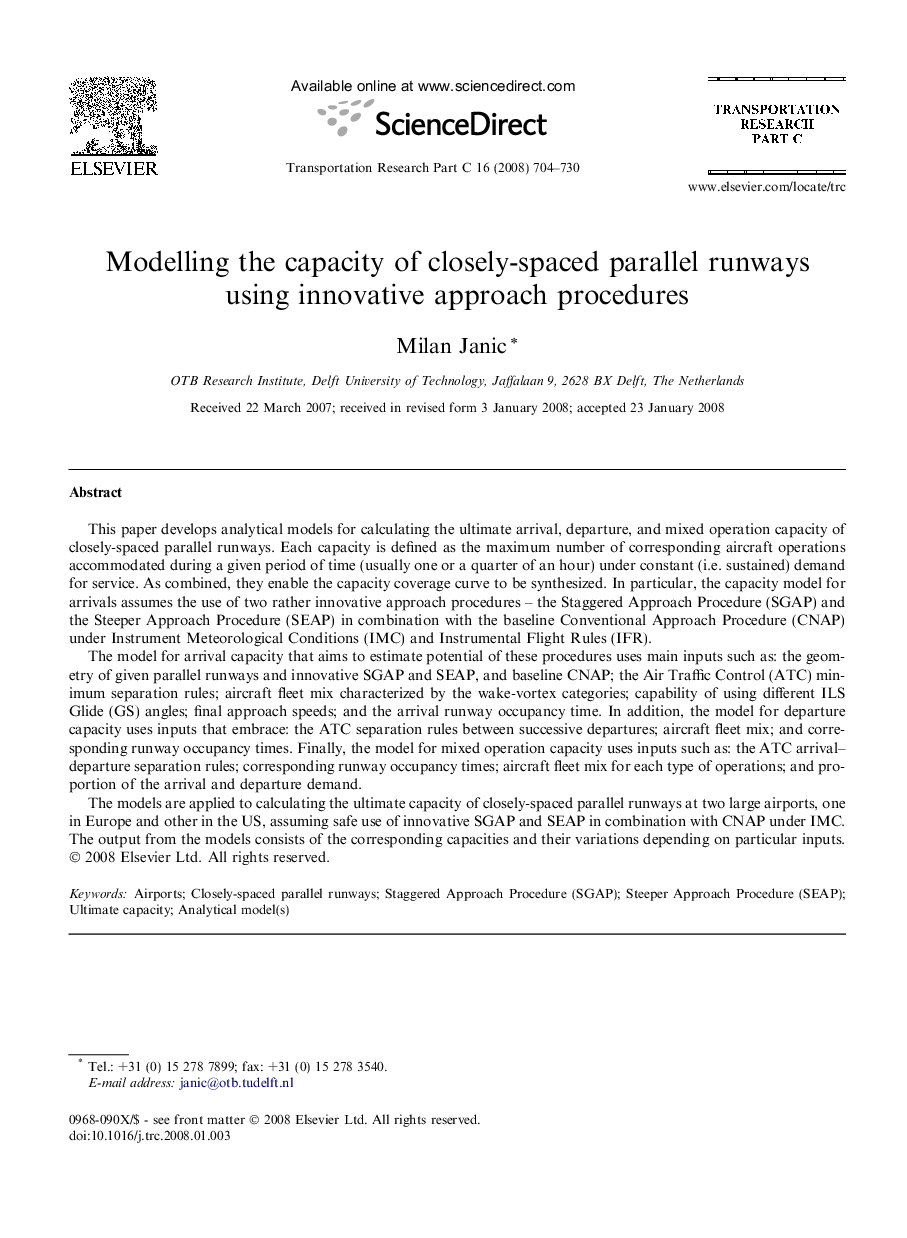| Article ID | Journal | Published Year | Pages | File Type |
|---|---|---|---|---|
| 526678 | Transportation Research Part C: Emerging Technologies | 2008 | 27 Pages |
This paper develops analytical models for calculating the ultimate arrival, departure, and mixed operation capacity of closely-spaced parallel runways. Each capacity is defined as the maximum number of corresponding aircraft operations accommodated during a given period of time (usually one or a quarter of an hour) under constant (i.e. sustained) demand for service. As combined, they enable the capacity coverage curve to be synthesized. In particular, the capacity model for arrivals assumes the use of two rather innovative approach procedures – the Staggered Approach Procedure (SGAP) and the Steeper Approach Procedure (SEAP) in combination with the baseline Conventional Approach Procedure (CNAP) under Instrument Meteorological Conditions (IMC) and Instrumental Flight Rules (IFR).The model for arrival capacity that aims to estimate potential of these procedures uses main inputs such as: the geometry of given parallel runways and innovative SGAP and SEAP, and baseline CNAP; the Air Traffic Control (ATC) minimum separation rules; aircraft fleet mix characterized by the wake-vortex categories; capability of using different ILS Glide (GS) angles; final approach speeds; and the arrival runway occupancy time. In addition, the model for departure capacity uses inputs that embrace: the ATC separation rules between successive departures; aircraft fleet mix; and corresponding runway occupancy times. Finally, the model for mixed operation capacity uses inputs such as: the ATC arrival–departure separation rules; corresponding runway occupancy times; aircraft fleet mix for each type of operations; and proportion of the arrival and departure demand.The models are applied to calculating the ultimate capacity of closely-spaced parallel runways at two large airports, one in Europe and other in the US, assuming safe use of innovative SGAP and SEAP in combination with CNAP under IMC. The output from the models consists of the corresponding capacities and their variations depending on particular inputs.
